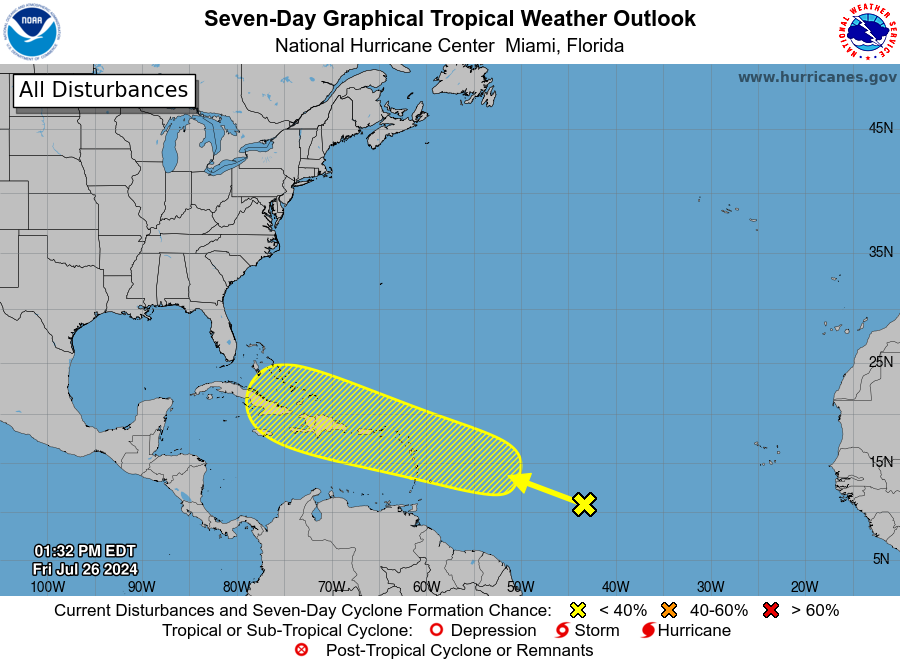National Hurricane Center tracking 'area of disturbed weather' in the central Atlantic
Although currently not a threat, a low-chance system in the central Atlantic the National Hurricane Center began tracking this week shows potential for development as it moves into the direction of the Caribbean.
The "area of disturbed weather" over the central tropical Atlantic Ocean is "expected to interact with an approaching tropical wave" in the next couple of days, the National Hurricane Center said Friday.
The system could develop while it nears the Lesser Antilles, a group of islands in the Caribbean Sea, during the early middle part of next week before moving west-northwestward near the Greater Antilles during the latter part of the week, the center's recent forecast says.
The chances of formation through the next 48 hours are nil but increase to 20% through the next week, according to the center. Even 20% is still considered a low probability of formation, the center's forecast added.

Atlantic storm tracker
Saharan dust preventing system from developing
Another factor preventing the system from developing into a tropical cyclone is a swath of dry air and Saharan dust it encountered when it pushed westward and just off the coast of Africa on Thursday morning, AccuWeather forecasters said earlier Friday. If the system survives, then August could be a different story.
"If that system is able to survive the hostile conditions as it continues westward, it may encounter more favorable conditions for tropical development near the Caribbean or the Gulf of Mexico around the start of August," AccuWeather Chief On-Air Meteorologist Bernie Rayno said in a statement.
How to read the NOAA map?
The shaded areas on tropical outlook maps are "areas where a tropical cyclone – which could be a tropical depression, tropical storm or hurricane – could develop," said National Hurricane Center Deputy Director Jamie Rhome.
The colors indicate how likely a system could develop, with yellow being a low chance, orange being a medium chance and red being a high chance.
The National Hurricane Center typically does not issue tropical advisories until there is a named storm, but there is an exception.
"If a system is near land and there is potential for development, the National Hurricane Center won't wait before it issues advisories, even if the system hasn't become an actual storm. This gives residents time to prepare," Rhome said.
When is the Atlantic hurricane season?
The Atlantic hurricane season runs from June 1 through Nov. 30.
This article originally appeared on USA TODAY: National Hurricane Center: System in central Atlantic may not develop

